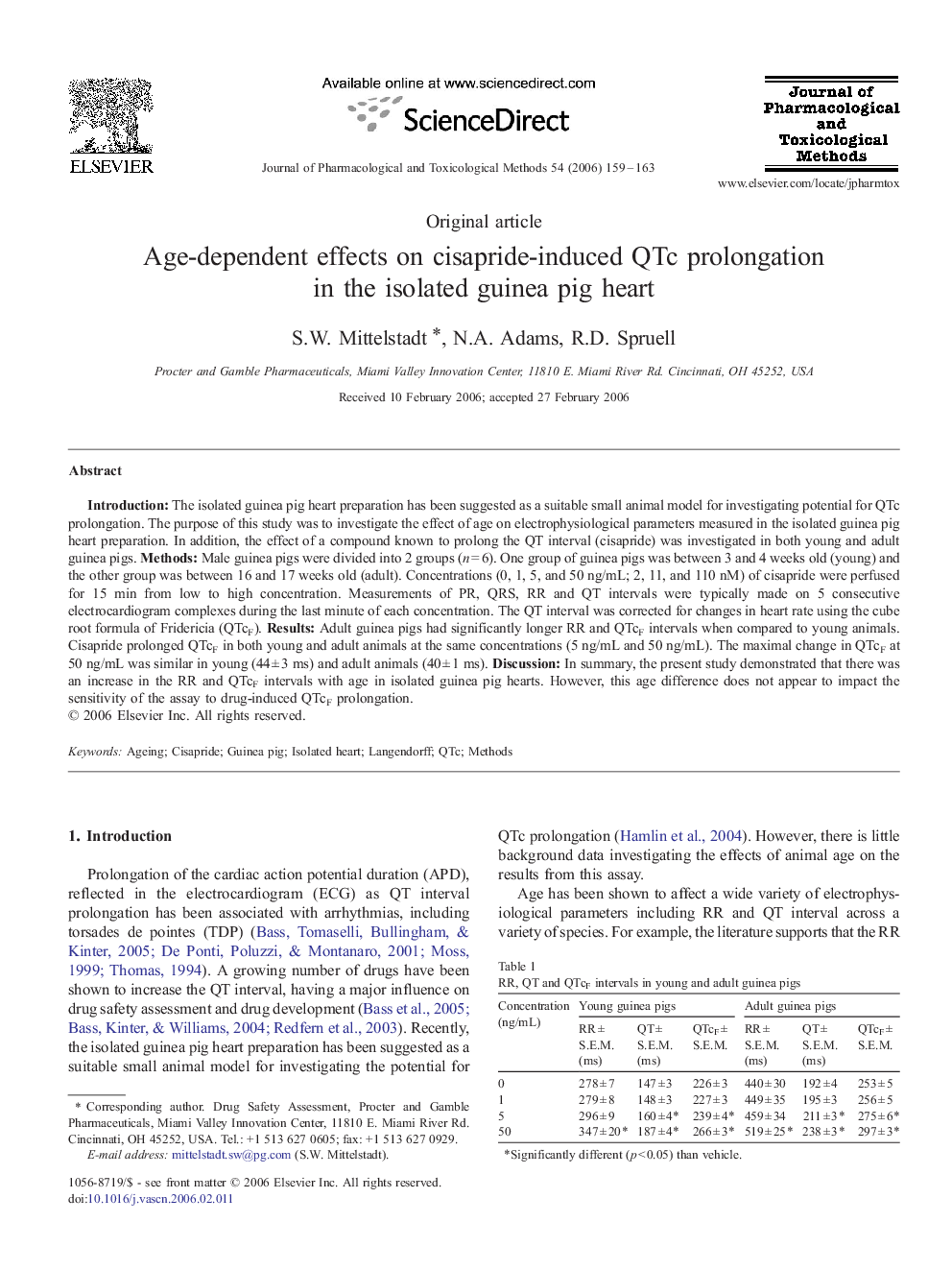| Article ID | Journal | Published Year | Pages | File Type |
|---|---|---|---|---|
| 2550282 | Journal of Pharmacological and Toxicological Methods | 2006 | 5 Pages |
Introduction: The isolated guinea pig heart preparation has been suggested as a suitable small animal model for investigating potential for QTc prolongation. The purpose of this study was to investigate the effect of age on electrophysiological parameters measured in the isolated guinea pig heart preparation. In addition, the effect of a compound known to prolong the QT interval (cisapride) was investigated in both young and adult guinea pigs. Methods: Male guinea pigs were divided into 2 groups (n = 6). One group of guinea pigs was between 3 and 4 weeks old (young) and the other group was between 16 and 17 weeks old (adult). Concentrations (0, 1, 5, and 50 ng/mL; 2, 11, and 110 nM) of cisapride were perfused for 15 min from low to high concentration. Measurements of PR, QRS, RR and QT intervals were typically made on 5 consecutive electrocardiogram complexes during the last minute of each concentration. The QT interval was corrected for changes in heart rate using the cube root formula of Fridericia (QTcF). Results: Adult guinea pigs had significantly longer RR and QTcF intervals when compared to young animals. Cisapride prolonged QTcF in both young and adult animals at the same concentrations (5 ng/mL and 50 ng/mL). The maximal change in QTcF at 50 ng/mL was similar in young (44 ± 3 ms) and adult animals (40 ± 1 ms). Discussion: In summary, the present study demonstrated that there was an increase in the RR and QTcF intervals with age in isolated guinea pig hearts. However, this age difference does not appear to impact the sensitivity of the assay to drug-induced QTcF prolongation.
